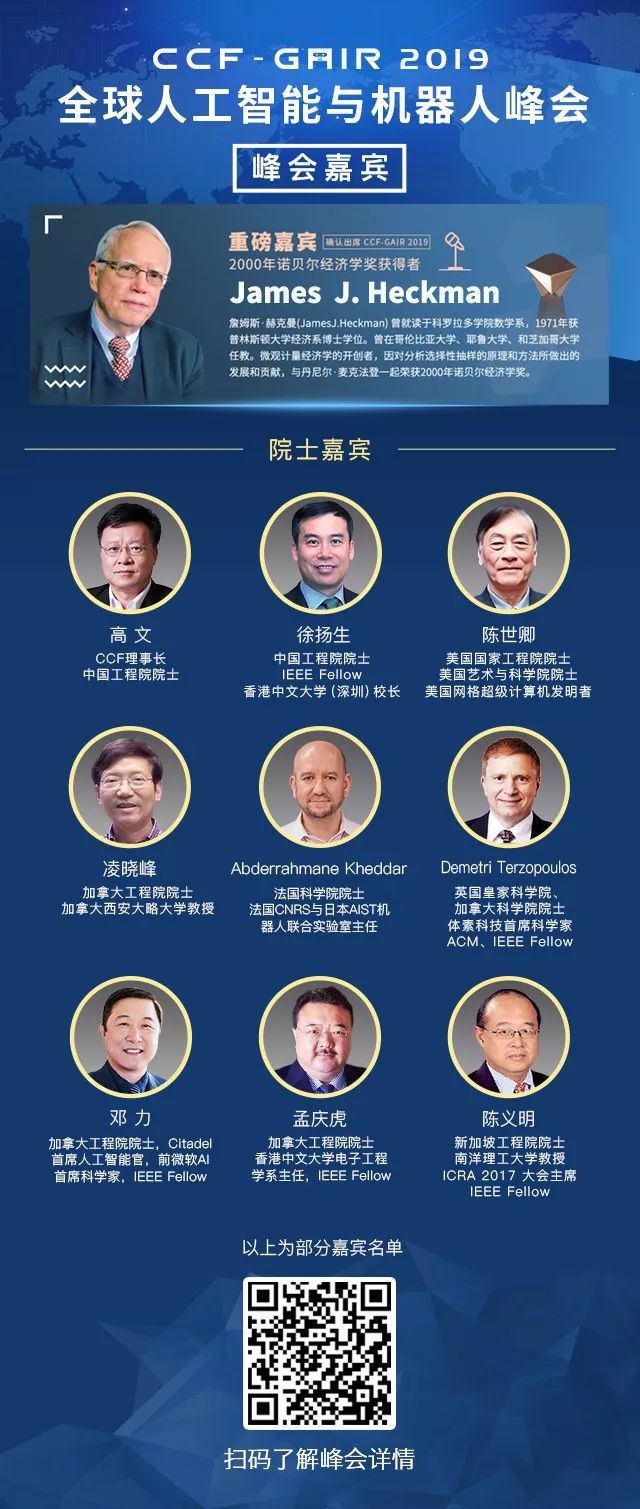▲ Click the above Leifeng Network to follow

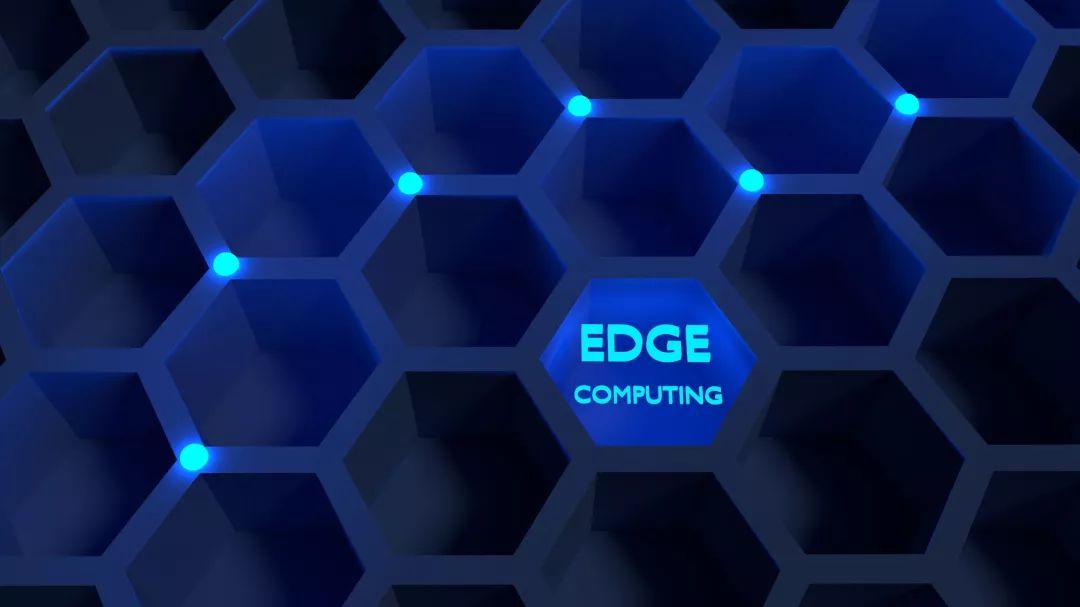
Edge computing can be divided into MEC, micro cloud, and fog computing.
Author | Guo Renxian
With the pervasive development of the Internet of Everything, in recent years, the popularity of edge computing has continued to rise, showing a competitive stance against cloud computing.
IDC predicts that by 2020, there will be over 50 billion terminals and devices connected globally, with more than 40% of data to be analyzed, processed, and stored at the network edge.
So, what exactly is this edge computing technology that is suitable for the network edge?
According to public information, edge computing is an open platform that integrates core capabilities such as networking, computing, storage, and applications, located close to the object or data source. The basic idea is to migrate the cloud computing platform to the network edge, attempting to deeply integrate traditional mobile communication networks, the Internet, and IoT services, thereby reducing end-to-end latency in service delivery.
To date, edge computing has developed three widely recognized technical architectures, namely MEC (Multi-Access Edge Computing), micro cloud, and fog computing. Often, people confuse these concepts, so let’s analyze these types of edge computing in detail below.
MEC

MEC, or Multi-Access Edge Computing, was first proposed by the European Telecommunications Standards Institute (ETSI) in 2014, with founding members including HP, Vodafone, Huawei, Nokia, Intel, and Viavi. MEC provides an IT service environment and cloud computing capabilities at the mobile network edge, executing partial caching, data transmission, and computation to offset latency associated with backhaul, ultimately achieving millisecond-level applications.
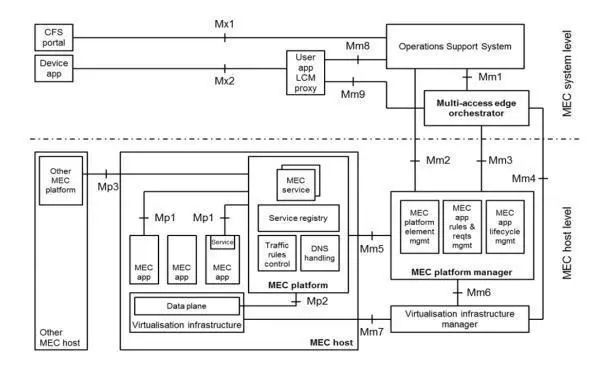
The basic architecture of MEC defined by ETSI
From a macro perspective, the basic architecture of MEC can be divided into three levels: Network Level, Mobile Edge Host Level, and Mobile Edge System Level. Previously, Leifeng Network has provided a detailed analysis of MEC’s technical architecture, which will not be repeated here.
As for the application scenarios of MEC, Leifeng Network understands that they mainly include the following aspects:
-
Local edge services related to network connectivity and network capability openness. For example, mobile virtual private networks that replace enterprise Wi-Fi networks, indoor positioning based on wireless network location combined with indoor distribution;
-
Video edge services that save backhaul bandwidth and reduce latency through near-edge processing. For example, edge caching combined with CDN, edge storage for video surveillance, and recognition analysis;
-
Edge-assisted computing services that reduce terminal costs through computing migration aimed at terminals. For example, edge cloud rendering for AR, VR, and gaming.
Additionally, in smart parks, MEC can help reduce traffic detours for video and IT applications, lower transmission latency, and provide a safer data processing environment; in the autonomous driving field, the MEC platform, leveraging 5G technology, provides high-precision maps, vision sharing, intelligent analysis, and continuous switching capabilities to assist autonomous driving, offering a more precise, safer, and uninterrupted driving experience.
MEC’s application scenarios are quite extensive, and there are many more IoT vertical application fields waiting for MEC researchers to unlock.
Currently, the three major operators in China have launched MEC pilot deployments, covering services such as LTE mobile virtual private networks, vehicle networks, edge caching, and indoor positioning. According to the “China Unicom Edge Computing Technology White Paper,” the planning for China Unicom’s 5G network MEC deployment is closely related to the deployment locations and business scenarios, which can be categorized into three ways according to demand: wireless access cloud, edge cloud, or aggregation cloud.
Overall, for uRLLC low-latency scenarios, MEC needs to be deployed near the base station side in the wireless access cloud; for eMBB scenarios in high-traffic hotspot areas, MEC can be deployed in the edge cloud; for mMTC scenarios, MEC is deployed in the higher-positioned aggregation cloud, capable of covering larger regional service demands.
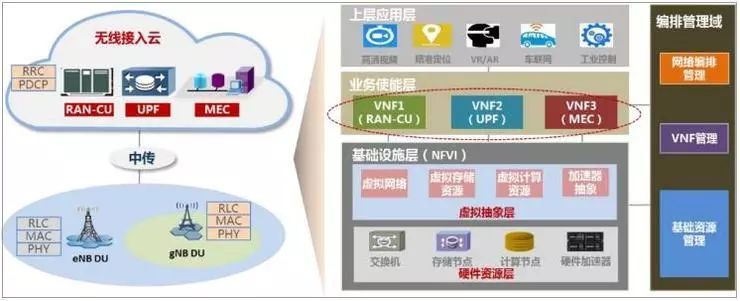
Regarding the wireless access cloud form, MEC is deployed alongside the base station CU unit and the core network forwarding plane UPF. By deploying local services at the base station side, it provides users with lower-latency services.
The CU unit includes RRC and PDCP layers, while the DU unit includes RLC, MAC, and PHY layers, and the CU units of 4G eNB and 5G gNB can be co-located. In this way, MEC service coverage is relatively small, suitable for low-moving or stationary latency-sensitive services, such as those related to sports venues, exhibition halls, and tourist attractions.
Micro Cloud

Compared to MEC, if MEC emphasizes the concept of “edge,” then micro cloud focuses more on the concept of mobility.
Micro cloud is a research result of the Open Edge Computing (OEC) project, which was initially launched by Carnegie Mellon University in the United States and later supported by companies such as Huawei, Intel, and Vodafone.
Public information shows that it is an edge computing architecture that combines mobile computing platforms and cloud computing, representing an intermediate layer of a three-tier architecture of “mobile terminal – micro cloud – cloud,” positioned between mobile terminals and cloud platforms, deployed at the network edge with mobility as a small data center.
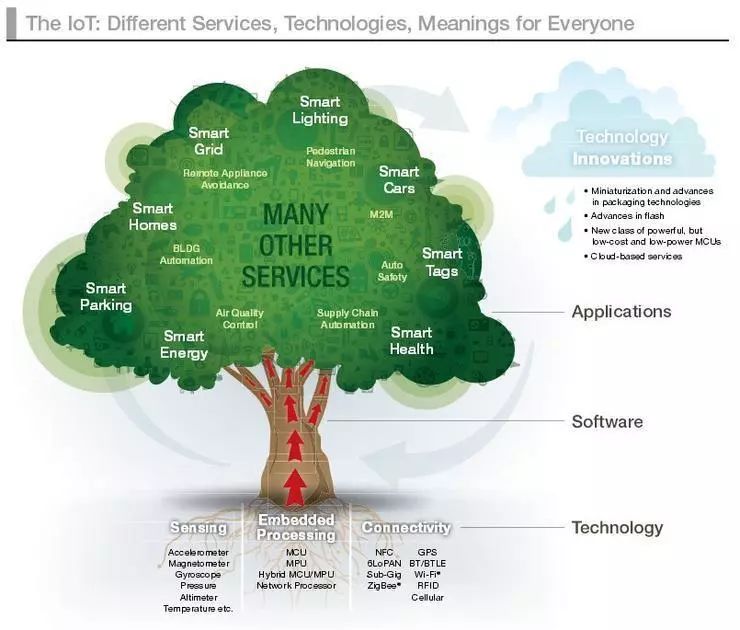
Although the micro cloud itself is located at the network edge, and intuitively closer to the user, it is primarily used to enhance mobility in scenarios such as vehicular networks, providing rich computing resources for mobile devices and even running directly on planes and vehicles. The micro cloud aims to deploy the cloud closer to the user, which can be understood as a lightweight MEC.
In terms of deployment location, the micro cloud is one hop away from the end user, such as deployed at cellular network base stations or Wi-Fi base stations, providing low-latency responses for end-user computing tasks. When multiple micro clouds are constructed into a distributed mobile edge computing environment, they expand available resources for users and can achieve resource load balancing through a dynamic migration mechanism similar to cloud platforms.
Essentially, the micro cloud is cloud, but compared to traditional clouds, there are distinctions, mainly reflected in the following aspects: Rapid Provisioning, VM Hand-off between different micro clouds, and Cloudlet Discovery.
For example, regarding rapid provisioning, since the micro cloud is primarily designed for mobile scenarios, it faces the highly dynamic connection issues brought about by user terminal mobility, thus requiring flexible rapid provisioning capabilities.
Fog Computing

The concept of fog computing was proposed by Cisco in 2012, and subsequently, in 2015, Cisco, along with Arm, Dell, Intel, Microsoft, and Princeton University, jointly established the OpenFog Consortium.
Compared to MEC and micro cloud, fog computing focuses more on the applications of the Internet of Things (IoT).
In February 2017, the OpenFog Consortium released the OpenFog Reference Architecture, which is a generic technology architecture that utilizes an open standard approach to seamlessly integrate cloud intelligence with IoT endpoints, aimed at supporting the data-intensive needs of IoT, 5G, and artificial intelligence applications.
From the perspective of traditional closed systems and reliance on cloud computing, OpenFog has transformed into a new computing model. It brings computing closer to the network edge based on workload and device capabilities. Fog computing allocates computing, communication, control, storage resources, and services to users or devices and systems located closer to users, thereby extending cloud computing to the network edge, which can be understood as a small cloud located at the network edge.
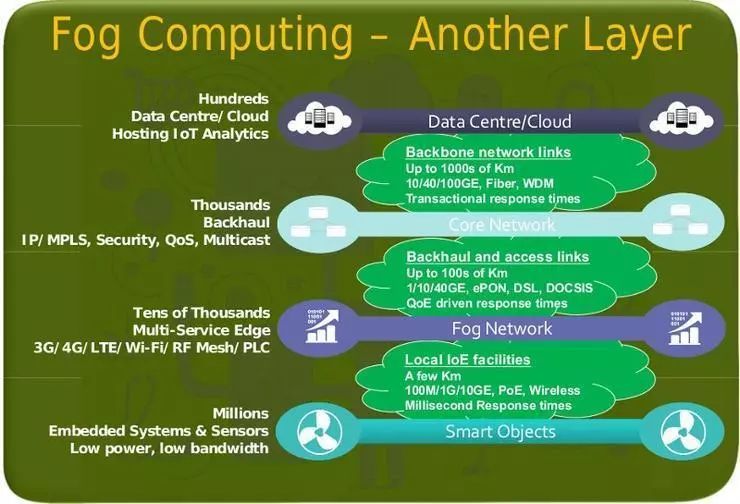
The entire fog network is composed of multiple fog nodes, where the performance of a single fog node is relatively weak, but geographically distributed widely. Due to the geographically dispersed nodes, large amounts of heat are not generated in concentration, thus eliminating the need for additional cooling systems, which reduces power consumption.
Leifeng Network has learned that this February, the U.S. Army Research Laboratory awarded a $1 million contract to Technica to develop a fog computing platform called SmartFog for battlefield soldiers. This platform trains machine learning algorithms while connected, fusing data from various sources on the battlefield and performing offline processing without connecting to the cloud, allowing soldiers to use artificial intelligence capabilities in disconnected areas. Here, it can be seen as an intermediate layer between individual soldier equipment and the cloud, enabling soldiers to access computing power and storage space at any time.
Comparative Analysis of the Three

MEC, micro cloud, and fog computing, as three specific models of edge computing, share many similarities in deployment locations, application scenarios, and real-time interaction, while also having differences. Leifeng Network understands that these differences are mainly reflected in the following aspects:
In terms of deployment locations, MEC is situated between the terminal and the data center, co-located with access points, base stations, traffic aggregation points, gateways, etc.; while the deployment locations for micro cloud and fog computing are consistent with the aforementioned MEC deployment locations. Additionally, the micro cloud can also run directly on terminals such as vehicles and aircraft.
Regarding application scenarios, MEC primarily focuses on reducing latency for applications, suitable for various application scenarios such as IoT, vehicle networks, AR/VR, etc.; micro cloud is applicable for mobile-enhanced applications and many IoT scenarios; while fog computing mainly targets IoT scenarios that require distributed computing and storage.
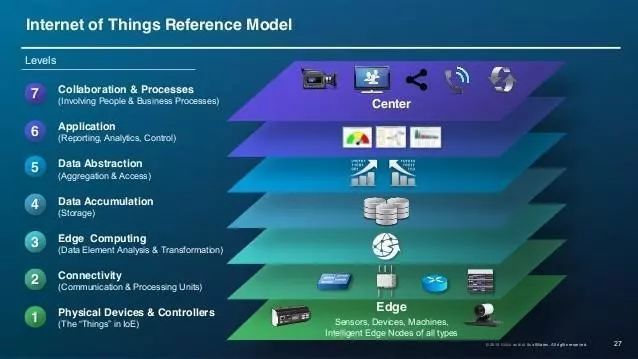
Regarding the mobility of the three and the support for real-time interaction of the same application across different edge nodes, MEC only provides mobility management for terminals moving from one edge node to another; while the micro cloud supports the switching of virtual machine images from one edge node to another; as for fog computing, it fully supports communication between distributed applications on fog nodes.
Leifeng Network Summary

Whether it is MEC, micro cloud, or fog computing, these types of edge computing each have their own characteristics and applicable scenarios. As mentioned at the beginning of the article, today, 40% of global data will be processed at the network edge, it cannot be said that edge computing has become an important computing method, and these three edge computing models are different types that have evolved over a long period, thus equally important for the development of the Internet of Everything industry.
In addition, the synergy between edge computing and cloud computing has also become a focal point. The two can optimize and complement each other, jointly enabling digital transformation in industries. If cloud computing is a coordinator responsible for long-cycle data big data analysis, then edge computing focuses more on real-time, short-cycle data analysis. As we know, edge computing is closer to the device side, thus providing support for the collection of cloud data and big data analysis, while cloud computing outputs instructions to the network edge through big data analysis.

Recommended Reading
▎Zhou Hongyi bids farewell to the mobile phone circle
▎The U.S. Department of Justice requests judges to reject Huawei’s lawsuit;Baidu responds to plagiarism of Tmall Genie; Samsung is sued for false advertising
▎Baidu’s “assistant” has become someone’s AI?
▎Li Yanhong and Xiao Du’s strongest interaction, Wang Haifeng releases Honghu chip, Baidu speaker undergoes a major transformation
▎Alipay face payment will launch beauty function;Trump:Twitter is nothing without me;Samsung admits that foldable screen phones are rushed to market
